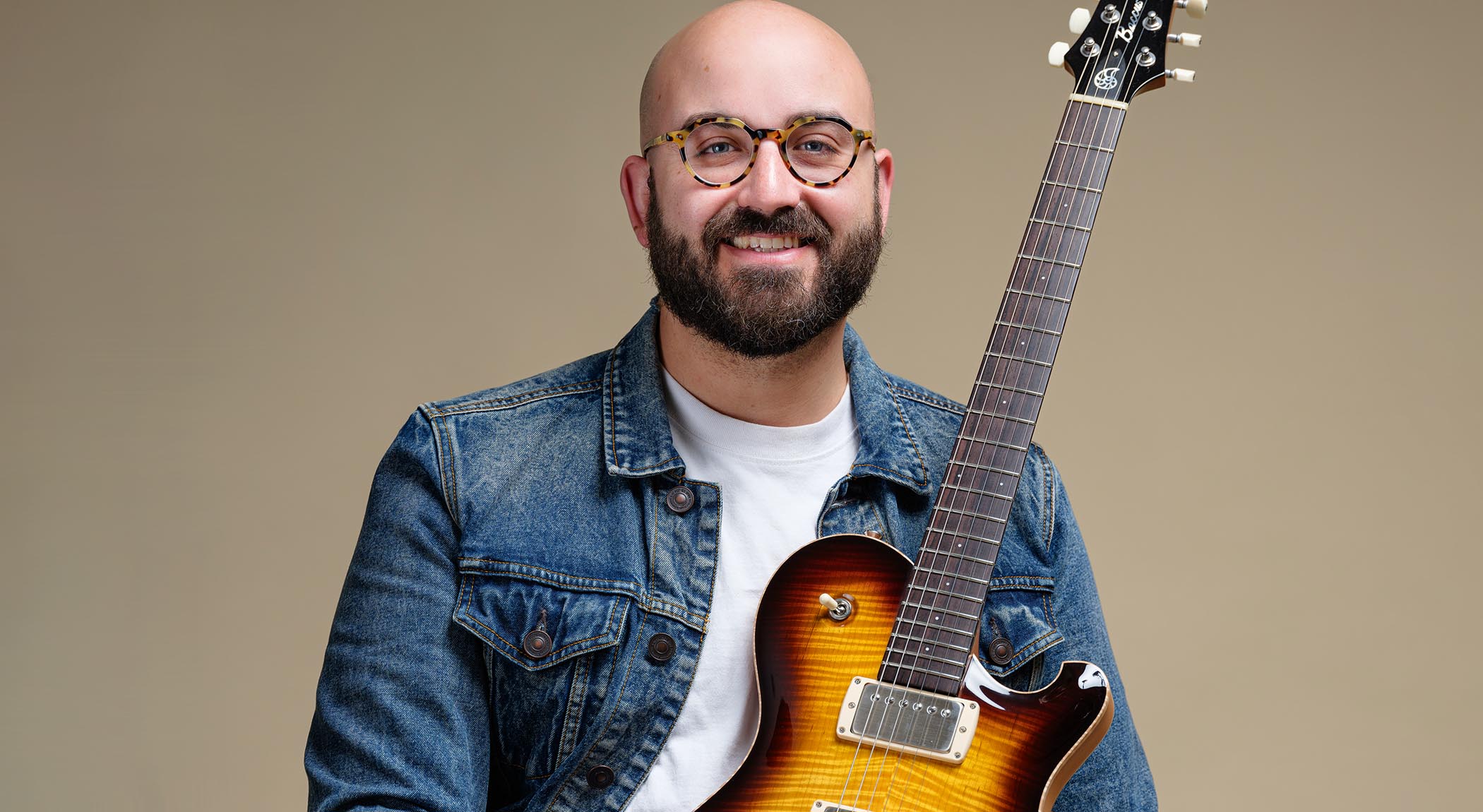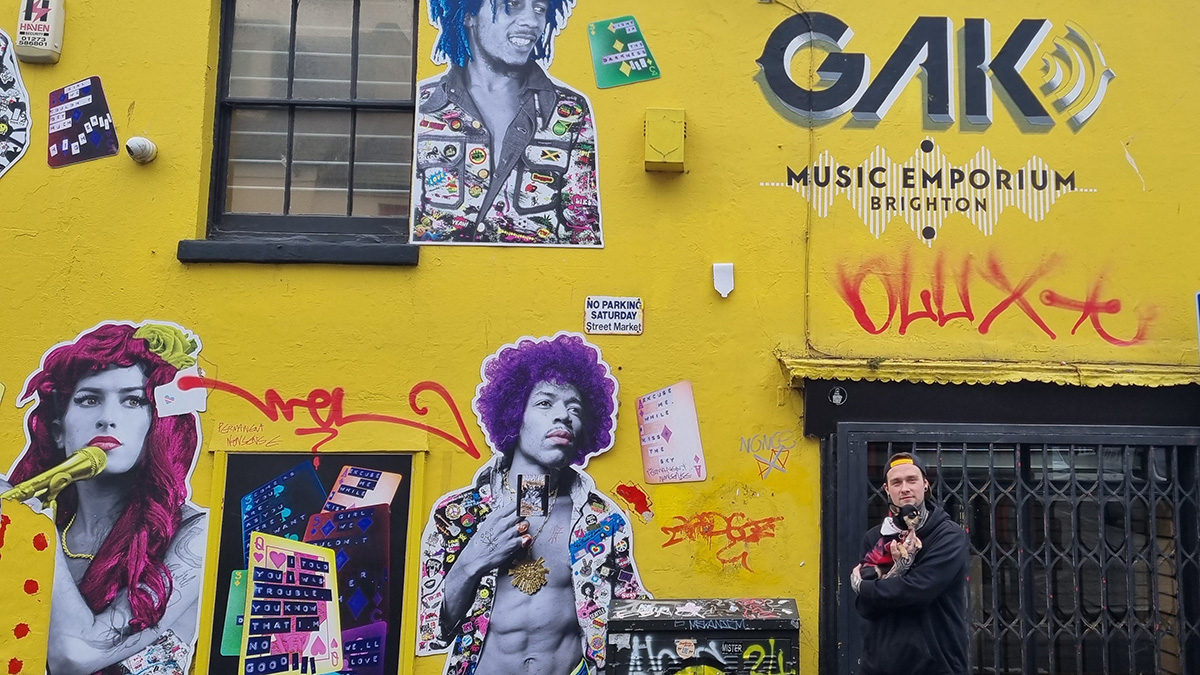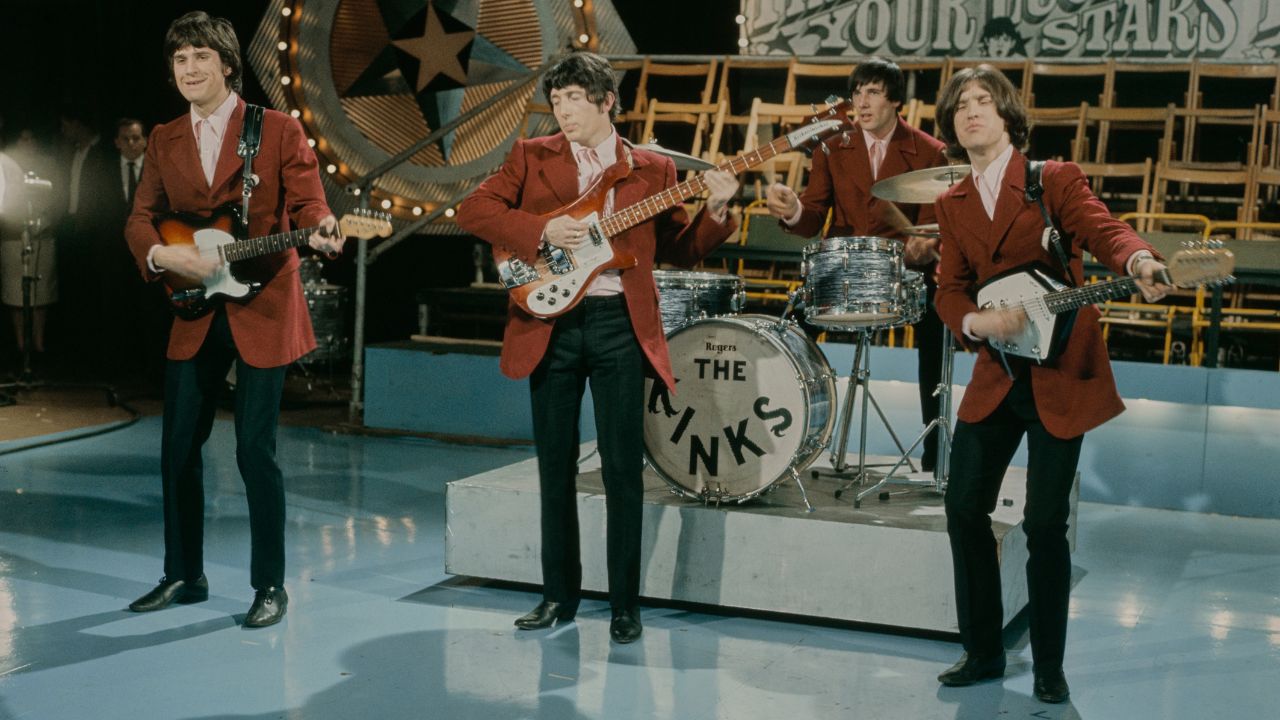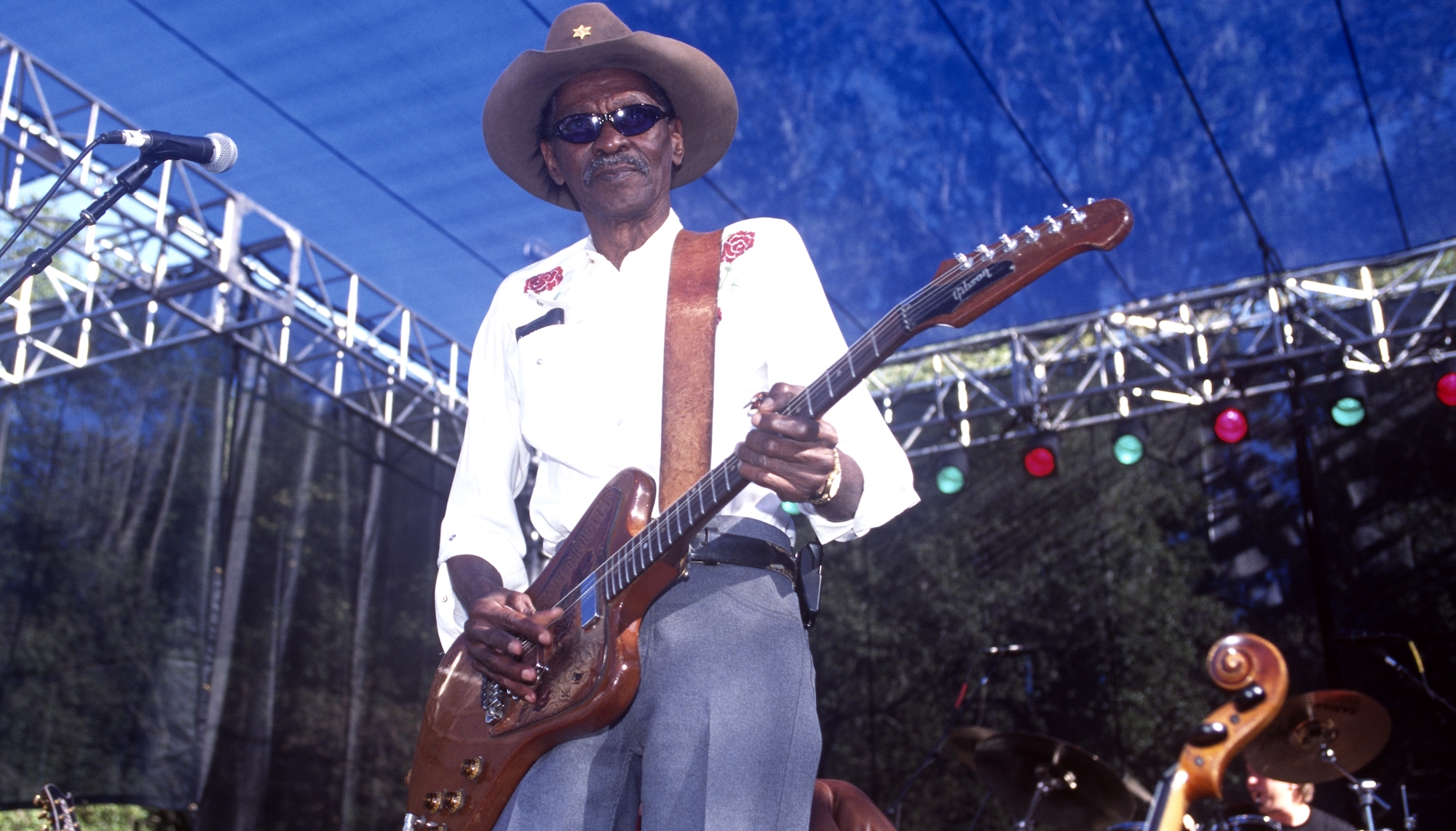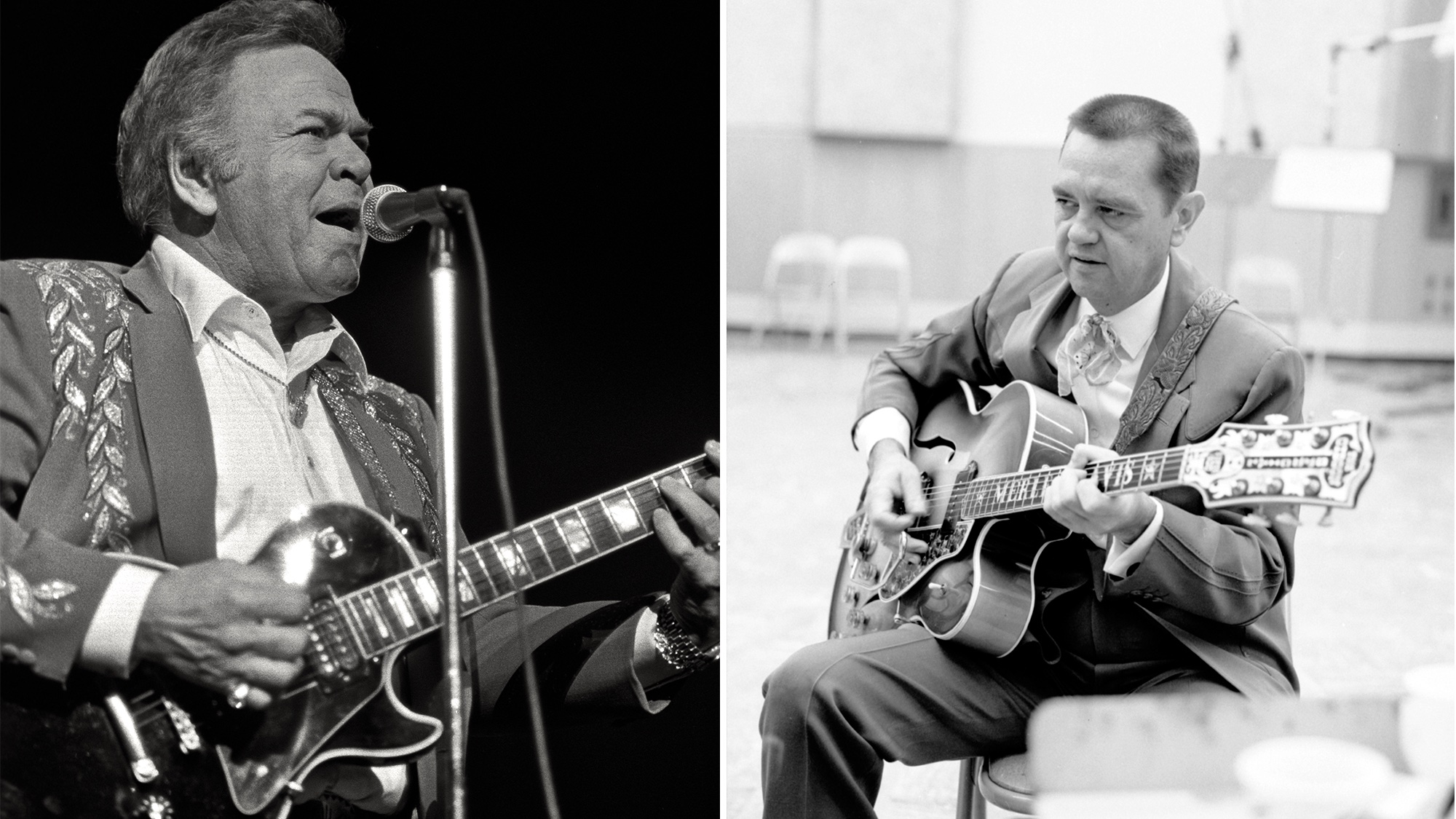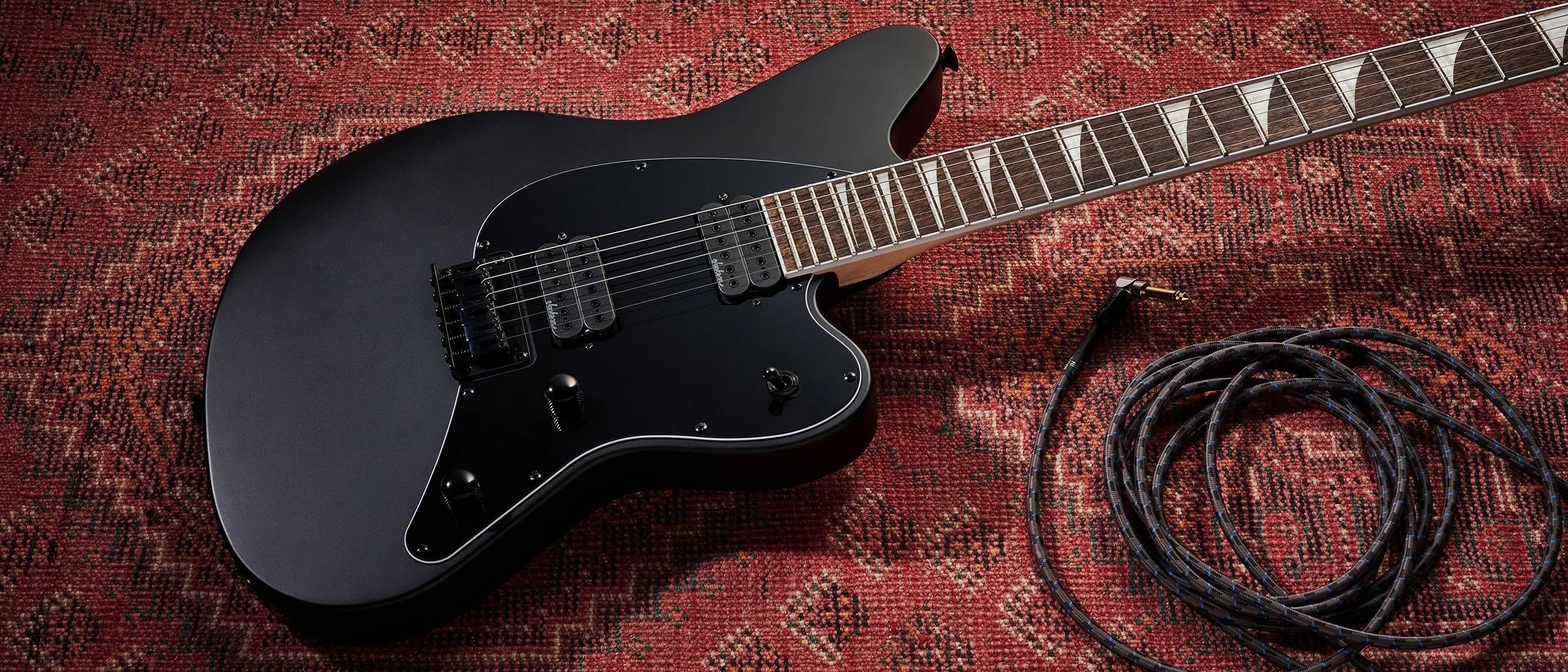Darkthrone: The Guitar World Interview
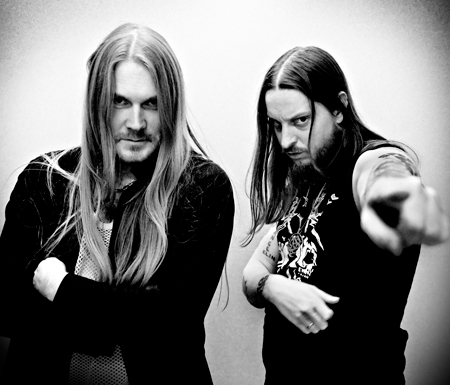
When it comes to uncompromising extreme metal, you’d be hard-pressed to find a truer example than Norway’s Darkthrone.
Since the band’s birth in 1987, founding drummer/vocalist Fenriz (born Gylve Nagell) and guitarist/vocalist Nocturno Culto (Ted Skjellum), have constantly pushed the boundaries of their art, caring little about industry trends or expectations. Instead, they simply play the music they want.
“We never discuss musical direction,” says Fenriz. “We never plan. We change as all on this planet changes: in a natural way, not artificial. It is total freedom.”
This artistic freedom has allowed the band’s sound to organically evolve through each decade: from brutal Eighties death metal to seminal Nineties Norwegian black metal to their current antagonistic crust punk/heavy metal sound, which has been recently showcased on F.O.A.D. and Dark Thrones and Black Flags (2007 and 2008, respectively).
With their fifteenth and latest LP, Circle the Wagons (Peaceville), Darkthrone issue an extreme metal statement that effectively incorporates all of their eclectic musical tastes. From the speed metal/punk of opener “Those Treasures Will Never Befall You” (in which Fenriz gives a nod to Metal Punk Death Squad by counting off M! P! D! S!) and epic heavy metal of “Stylized Corpse” to the pissed-off hardcore of “I Am the Working Class,” Darkthrone proudly package their distaste for all things plastic, modern, trendy and spineless in this seething metal album.
Guitar World recently had the chance to catch up with the ever-charismatic Fenriz. In the following interview, the Darkthrone founder discusses the creation of Circle the Wagons, his role in the current metal scene and his relationship with Burzum mastermind Varg Vikernes.
The production on Circle the Wagons is the best-sounding yet, but you still manage to not lose the true underground spirit and sonic grimness that is signature to your sound. How did you record this album? Any secrets you’d like to share with us guitar players?
Get The Pick Newsletter
All the latest guitar news, interviews, lessons, reviews, deals and more, direct to your inbox!
You always have that musician angle, haven't you? [laughs] I don't even know the name of the studio, the type of drums or cymbals, bass, guitar or vocal microphone I used. What will please you, though, is that I just woke up from a farewell music-session with Didrik [Telle, bass] and Sindre [Solem, vocals] from award-winning band Obliteration. I taught them both how to beatmix house/techno on turntables yesterday. It's now 7:49 in the morning and I’m eating a banana, drinking water and listening to one of the grand albums of my life: Pat Metheny’s American Garage. Now how about that?
Now to answer your beautiful question, the other day I was listening to Deaf Dealer’s first album, Keeper of the Flame—which is an old Canadian heavy/speed/NWOBHM style album with organic production—and I realized that we have that sound now. How we get the sound is from our lifelong love of heavy blues-based rock, heavy and speed metal and NWOBHM. It’s as simple as that. We were born in ’71 and ’72 and quickly became music freaks. We record everything ourselves on our own portable studio, which makes it sound oh so organic.
“I Am the Working Class” is probably one of the more aggressive tracks from Circle the Wagons, with its very old-school, blue-collar vibe. Can you talk about the inspiration behind that track?
The lyrics reflect more than working class matters. It also explains why I refuse to play live. It sounds crude but I think meeting new people every day is shallow. They just want to get a minute with a touring “star.” The fact is the “stars” never remember you—you only remember them, right? Shallow. Folly of man. Regarding the lyrics of this song, I think it's more interesting when a person that has actually been working for minimum wage for 23 years—so as to not sell out their life's work—like Darkthrone, writes those kinds of lyrics, rather than, say, a 17 year old that just started working.
You mention in the liner notes of Circle the Wagons that Metalucifer's Gezol said Darkthrone’s early releases were “too black…little metal.” Did you feel like this back in the day?
About the Darkthrone's releases? No. This was another fault of the Nineties: the black suddenly got overexposed and the organic heavy metal of it just got lost. How many Mercyful Fate-style bands existed in, say, 1997? Come on, answer me! The answer is none! It was the darkest of times for metal. All metal styles of the Eighties died in the Nineties but were re-animated in the new millenium! All the old styles with old sounds are back. You have the traditional doom of Age of Taurus, thrash metal of Deathhammer, death metal of Obliteration, heavy metal of Blackolicus, speed metal of Speed Trap, old style grindcore of Lobotomized…
The only thing missing is a band playing the style of the first Crimson Glory, first two Queensrÿche and second and third Fates Warning. Satin Black from Germany are trying, but they’re still are a bit too thrashy and their drum production is too clinical sounding. But they are worth a listen—they are fighting their own fight!
Four of the tracks were written solely by you, while “Stylized Corpse” was written with Nocturno Culto. Can you talk about your writing process?
Yeah, five of the tracks are by me—in a 1979–1985 style—and four are by Ted, in a 1970–1987 style.
Since the summer of 1991, after we recorded A Blaze in the Northern Sky, I said to Ted, “You write your songs and I’ll write mine, they will all be accepted and recorded and released.” We still work that way. We still record in batches, four sessions each album and with no dogmas. There are exceptions, of course.
How do we make songs? I cannot answer for Ted—I have no idea. I get music falling into my head and I hum it until I can get to an MP3 player to hum it in to. Then I make the guitar parts for it. I will mull it over in my head for two to three months, making some lyrics as well. Finally, I take the three-and-one-half hour bus ride up north to set the studio up in our friend’s house in the wilderness. I’ll teach Ted the riffs and structure and immediately start recording.
I already know half of what the drums should be like in my head. Some bass lines too. The rest I make up on impact. This ensures nerve and freshness for my personal listening enjoyment. Perfection is nothing to strive for. Perfection was already achieved on the second Watchtower album [Control and Resistance, 1989], first Dream Theater album [When Day and Dream Unite, 1989], Gaucho and Aja by Steely Dan, Moving Pictures by Rush, etc. It is not for everyone to do, and certainly not for us.
So does Nocturno track all the guitar parts on the record?
On the record, almost always yes. I do some guitar and bass on my songs, as well as the vocals, obviously. We have to be multi-instrumentalists in this band. It helps our understanding of songwriting. Ted plays drums in some band up in the north as well. He secretly wants to be a drummer. I enjoy playing bass and singing more than anything. Drums are merely a fucking tool to me. I stopped playing with ambition in ’93. Since then I have un-learned drumming.
What was the main guitar and amp you used when writing these songs?
At gunpoint, I couldn't tell you. Ted uses some kind of custom-made old-school crafty effect pedal, though. It has almost no knobs on it.
The Terrorizer-sponsored Live Evil Festival is made up of bands chosen entirely by you, based on your Band of the Week blog on your MySpace page. How did this festival come about?
I was doing my blog, each sixth day posting a new band that I'd like to share with the over 62,000 friends on our MySpace and beyond. Then came a serious inquiry from Mark Lewis [writer from the U.K.’s Terrorizer Magazine] about setting up a festival in England. My terms were: 1) I don't have to be at the festival and 2) several of the bands have to be from “other” parts of the world, especially Brazil. We also tried to get Pentagram from Chile. They wrote me and said they wanted to be a part of the festival now too.
I don't get any money out of this, not for posting the bands nor for the festival. To me, music is idealistic and uncorrupt.
Are there any new bands that you’re really into at the moment?
Our music fits in more with current bands like these now: Gehennah from Sweden, Metalucifer, Blizzard from Germany, The Lord Weird Slough Feg, Wolf, Alpha Centauri, Metal Inquisitor, Portrait, In Solitude, Helvetets Port, Speed Trap, Atlantean Kodex, Christian Mistress, Demons Gate, Doomed Beast, Sonic Ritual, Aura Noir, Harbinger, Enforcer, Blackolicus, High Spirits, Whip Striker, Noia from Italy, Old, Aria from Russia, Crystal Viper, Lonewolf, Résistance, Ghost, Satin Black, Iron Kobra, Argus, Funeral Circle, etc.
The old bands, mainly from the Seventies and Eighties, that we may or may not be influenced by are Motörhead, Diamond Head, first Metal Church album, Agent Steel from ’84-’86, Manilla Road, Fingernails from ’88, Fates Warning’s second and third albums, Anthrax from ’83-’85, Accept up to ’83, Savage Grace’s Master of Disguise, Griffin’s Protectors of the Lair, English Dogs, Metallica’s first three albums, Satan’s Court in the Act, Jaguar’s Power Games, early Saxon, Ozzy from ’80-’86, first two Helloween albums, Iron Maiden, Tröjan, Black Sabbath from ’70-’82, Exciter’s Heavy Metal Maniac, Queensrÿche’s first EP and The Warning, Gotham City, Witch Cross, Mercyful Fate, Thor, Heavy Load, ADX, Holy Terror, Overkill, Tyrant’s Reign, Brocas Helm, Cirith Ungol, Angel Witch, Witchfinder General, Celtic Frost, Bathory, Ostrogoth, Tank, Seventies Scorpions, Uriah Heep, Rush, Pentagram from the States, Baron Rojo, Trust, Samson, AC/DC, Kiss, Flotsam and Jetsam’s Doomsday For the Deceiver, Omen from ’84-’86, Deaf/Death Dealer’s first album, Deathside, Asta Kask and Puke.
Your musical tastes reach all across the board. Are people ever shocked to find that you’re not just listening to rare Mayhem demos?
Yes, especially the kind of metal fans that met metal in the Nineties, which is the decade of already chewed up and spit out metal styles. It was a decade perfect for followers that need totalitarian styles to listen to.
Darkthrone is best known for helping forge the “True Norwegian Black Metal” sound, most notably with Transilvanian Hunger. Since then, the band has gone on to incorporate other styles into the mix. Does it bother you that many people still see Darkthrone as the band that made Transilvanian Hunger?
Incredibly so, but luckily our early recordings [featured in the Frostland Tapes compilation in 2008] have been secured and released so that people can see we came from a varied background with influences as diverse as epic Metallica, like “Orion,” “Call of Cthulhu” and “To Live is To Die.” All those brave songs that way too few bands followed or elaborated on. Then there were the first Napalm Death, Dream Death, Celtic Frost, Cryptic Slaughter, the Nihilist demos, Slayer and the first Death album, Scream Bloody Gore.
We recently profiled Burzum in our magazine. Varg has been very vocal about dismissing nearly everyone in the original Norwegian black metal scene as being “rats”…except you. Have you spoken with Varg Vikernes since his release from prison? What are your thoughts about the new Burzum record?
He contacted me in June last year, during the midst of tenting season, and we are now in friendly contact. I would like to add that no one asked about “us” in ’92. Now it's what everyone asks about.
The metal scene that was made up of the strong silent types is over—it’s now a world of gossip and weakness. But, I made my own scene. There are still brave parts of Middle Earth that defend real metal. I do not live in Hobbittun nor Mordor. If you love metal and defend organic sound you come to Rohan! [laughs]
The new Burzum [Belus] is brilliant. Varg picks up where he left off in the free world. I can sense a head held high and optimism underlying the beautiful music on Belus! Hail!
To wrap up, I notice a lot of similarities between Darkthrone’s current sound with crust punk. How did you first come into contact with crust punk and what about it grabs your attention?
I liked punk since 1986, and I mean all kinds of punk. From the Sonics to Dead Kennedys, the Saints to the Ramones and from Beyond Possession to Septic Death. There's almost no crust left in our sound now. As you can see in our influences list we are basically just influenced by Asta Kask, Puke and Deathside from Japan. Since the ‘80s, crust has been blown out of proportion – a lot of it being more metal than metal itself. Every fad must be revolted against. It's the punk thing to do.
Thank you for a fantastic interview. Go to my Band of the Week blog, it's a haven for music freaks!
“I knew the spirit of the Alice Cooper group was back – what we were making was very much an album that could’ve been in the '70s”: Original Alice Cooper lineup reunites after more than 50 years – and announces brand-new album
“The rest of the world didn't know that the world's greatest guitarist was playing a weekend gig at this place in Chelmsford”: The Aristocrats' Bryan Beller recalls the moment he met Guthrie Govan and formed a new kind of supergroup
